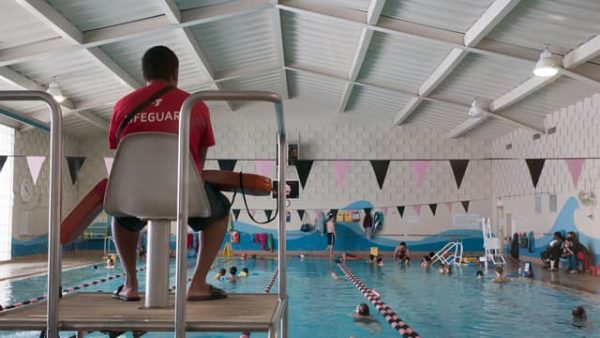University water safety expert working on national initiative to reduce drowning

The risk of drowning remains a serious issue for children, but a UNC Charlotte water safety expert is taking part in a national effort to help alleviate that danger. To mark the 100th anniversary of its swimming safety efforts, the American Red Cross has launched a program to cut drowning in half in 50 U.S. cities.
Roy Fielding, exercise science program coordinator and director of aquatics, is helping lead the effort in the Queen City. A 40-year Red Cross veteran, Fielding said parents need to understand the importance of water safety.
“It’s huge. According to the CDC, in children ages one through five, drowning is the leading cause of accidental death,” stated Fielding
A recent survey commissioned by the Red Cross showed many Americans overestimate their ability in the water — while 80 percent said they could swim, fewer than 60 percent possessed the basic skills that could save their life.
These skills, which together make up a person’s “water competency,” are the focus of the Red Cross program.
“It’s not about swimming. The question is if you get into a situation, like falling in the water, do you have the ability to get yourself out of it,” said Fielding.
Water competent individuals are able to:
- Step or jump into the water over their heads
- Return to the surface and float or tread water for one minute
- Turn around in a full circle and find an exit
- Move 25 yards in the water and exit from the water
Recent water safety outreach has focused specifically on the African-American community, and with good reason, noted Fielding. CDC data show African-American children ages 5 to 19 are five times more likely to drown in a swimming pool than white children of the same age, and only one in three African-Americans reports they can perform the basic water safety skills.
Fielding said there are several reasons for the disparate numbers.
“A lot of it is opportunity. Some African-American families may not have the same access to swimming lessons. A lot of it has also been the fear factor,” Fielding said. “The parents of the children couldn’t swim so they’re hesitant to have their children get in the water. It’s kind of a revolving door where the children don’t get exposed to the water.”
The YMCA of Greater Charlotte is trying to address the issue, too. Its new initiative targets African-American and Hispanic children who might have limited experience with pools. Safety Around Water instructors hope to teach 300 children in low-income apartment communities in the first year.
In general, Fielding recommends swimming places patrolled by a lifeguard, and parents with children who can’t swim should stay within an arm’s reach while in the water.
Find more information on Red Cross swimming and water safety programs here.
Fielding has assisted the American Red Cross over the last 12 years with the development and implementation of the Lifeguard and Lifeguard Management programs, in addition to serving as a chapter volunteer for more than 40 years. Currently, he is a member of the American Red Cross Scientific Advisory Council and is vice chair of two CDC model aquatic health code technical committees.
Photo: “20130126-L1033504.jpg” by Susan Sermoneta is licensed under C.C. BY-NC 2.0